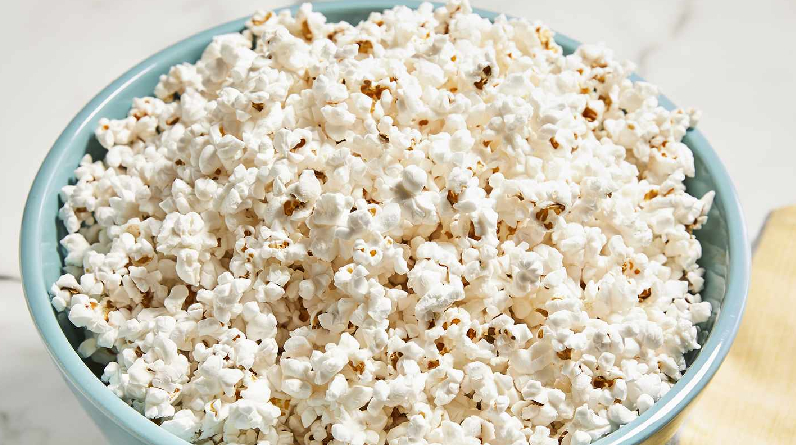Popcorn, once seen as a decadent treat at the movies, is now considered a healthy alternative. But can we say for sure that popcorn is healthy? The corn kernels themselves, the oil used to pop them, and any seasonings used are all possible variables.
Let’s start with the corn
Popcorn is made from corn, which is a whole grain, and whole grains are a great way to get vitamins, minerals, fibre, and disease-fighting antioxidants. Unlike refined grains, which are stripped of their fibre and nutrients, whole grains contain the entirety of the grain and are therefore also filling. According to studies, those who consume the most whole grains have a lower risk of developing cardiovascular disease, stroke, cancer, diabetes, and obesity. Research has even linked eating three servings of whole grains per day to a lower body mass index and less abdominal fat.
However, you should consider whether or not the popcorn you ate was derived from a GM crop. Because of the lack of research on the topic, some scientists and medical professionals are wary of recommending GMO foods to their patients. Look for the “Non-GMO Project Verified” label, or kernels or popcorn that are USDA Certified Organic (which guarantees no genetically modified organisms).
The Oil
Check the popcorn’s oil content before committing to a specific brand. Avocado oil and extra virgin olive oil are two examples of MUFAs that are both beneficial to heart health and anti-inflammatory. Corn oil, soybean oil, sunflower oil, safflower oil, and cottonseed oil are all high in omega-6 fatty acids and have a tendency to be pro-inflammatory.
Making your own popcorn at home has many benefits, one of which is the ability to use a high monounsaturated fatty acid (MUFA) oil or to air-pop it (using a hot air popper or in a paper bag in the microwave), after which you can mist it with healthy oil. Quinn’s Just Sea Salt and Organic Popcorn is a popular brand of oil-free microwave popcorn.
Spices and Rubs
At last, think about the ingredients in your snack. Sometimes, all that’s added to popcorn in a bag is a little bit of salt and pepper. It’s also possible that conventional dairy ingredients like non-grass-fed or organic butter and cheese were used. Popcorn can be found in a variety of flavours, and some of them are sweetened with sugar or another sweetener (think kettle corn). See what’s inside the bag before you start eating from it.
If you make your own popcorn at home, you can get creative with healthy toppings like dried fruit, nuts, seeds, Italian or chipotle seasoning, turmeric, black pepper, or cinnamon and cocoa powder. Additionally, you can regulate the saltiness of a homemade version.
Hundreds of Healthy Snacks Were Taste-Tested, and These Are the Winners
What It Comes Down To
However, the nutritional quality of popcorn varies widely. Popcorn is a staple in my household, and I prefer the organic, non-GMO varieties that are cooked in extra-virgin olive oil or avocado oil and sprinkled with sea salt or pink Himalayan salt.
The more decadent popcorn flavours you enjoy should be savoured in moderation, not as daily staples. Watch your serving sizes, too. Popcorn is typically served in portions of three to three and a half cups, but a full-sized bag can be devoured in a single sitting. That might be the same as consuming five slices of bread if you’re counting carbs. Additionally, the increased sodium intake may lead to fluid retention and subsequent bloating.
